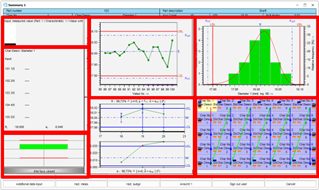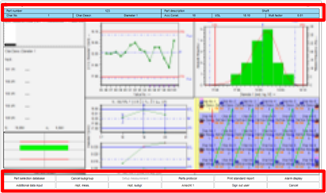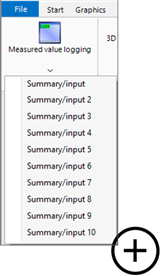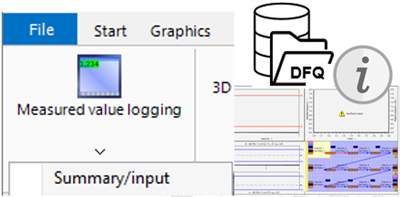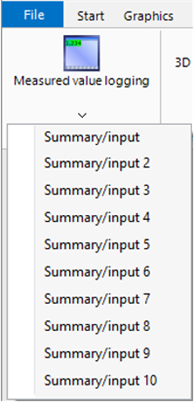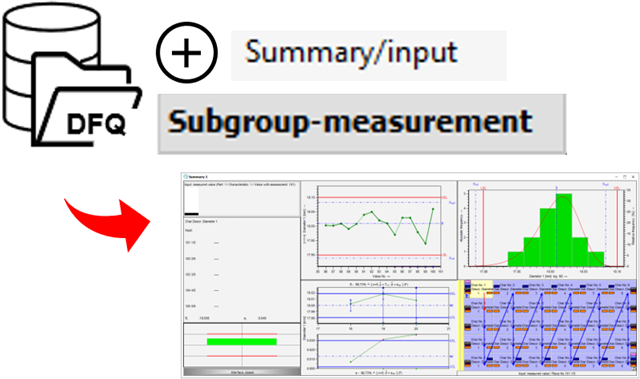Why does procella display the same data set differently for different users?
This topic is a food for thought. It is not a step-by-step solution to the problem. In order to find out exactly what is at the root of these different views, it is necessary to analyse the current system. The first step is to understand the different storage options available.
In procella, the "Summary/input" window is used not only to display a test order, but also to record data. It guides the user through the measurement process. The storage of the "Summary/input" windows is divided in the representation (layout) and the procedure (for the test order).
| Representation (layout) | Procedure (for the test order) |
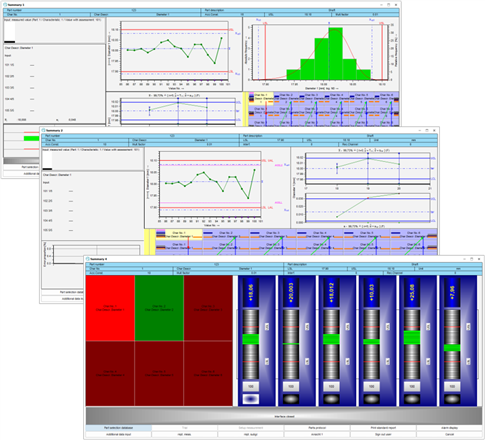 |
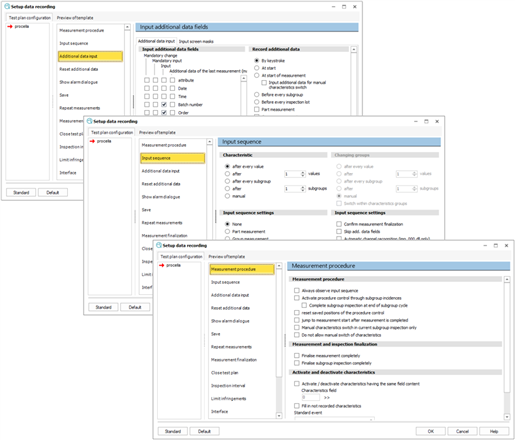 |
Different storage concepts are available. The system configuration dialogue specifies which concept is used.
| Storage concept with copies | Storage concept with templates |
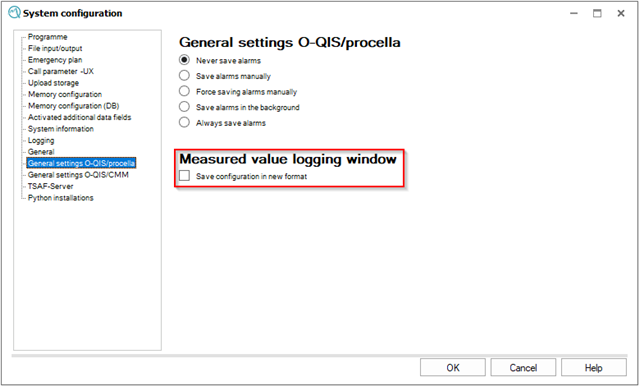 |
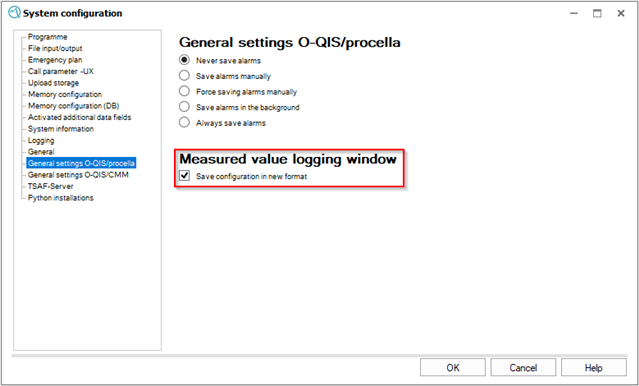 |
Table of Contents
“Summary/input” window layout basics
 |
10 different “Summary/input” layouts are provided. |
Storage concept with copies
Layout storage concept using copies
|
|
The default layout, or a layout that has been assigned to a user or user group, is a completely new layout. It is, so to speak, "Summary/input 11". |
|
|
Whether a data set is stored in the database or as a file, a fixed “Summary/input” window can be stored with the data set. In this case, the data set contains information about which layout number to load. |
|
|
The current configuration of the "Summary/input" window can be saved with the data set. It is so to say the layout 11 stored with the dataset. |
Procedure for test order (no template)
The options in the "Setup data recording" dialogue organise the processing of the measurement situation. The behaviour of the Q-DAS application and the interactions to be carried out by the operator are defined here. The configuration settings can be defined at different levels.
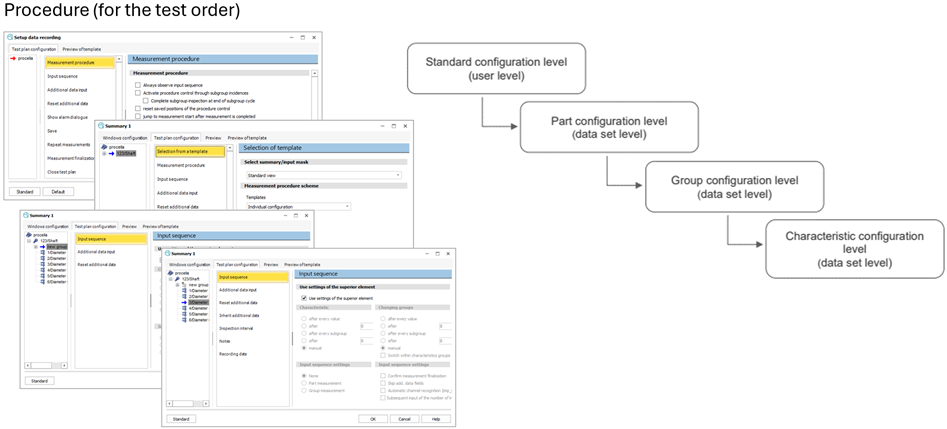
These are inherited downwards. If configurations are made on one of the lower levels, these will be used preferentially. The configuration settings of the higher levels are ignored. All users have the settings from the data set.
Using the standard configuration level means that the settings are saved according to the configuration management for the user or user group. This means that regardless of which data set the user loads, the configuration stored at the standard configuration level is applied during data recording.
Storage concept with copies - Example
Here is a brief overview of just a few of the possible ways to distribute the "Summary/input" window and split the configuration between default, by user group and by individual user.
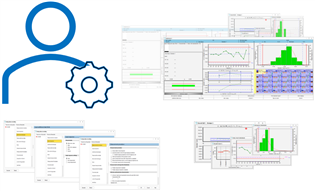 |
 |
Without custom settings and without changes through configuration management, a user group inherits all settings from the “Configuration” user. |
|||
|
|
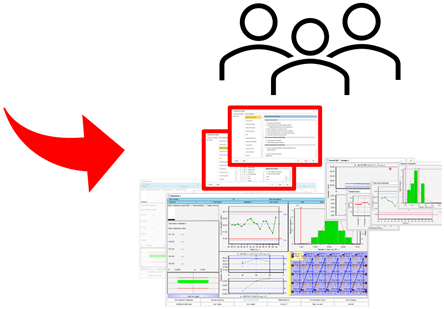 |
In this case, the procedure for the test order is changed at the standard configuration level for this group. All other settings are inherited from the "Configuration" user. |
|||
|
|
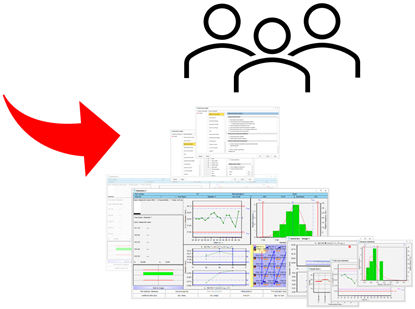 |
Although a user group inherits the settings of the "Configuration" user, the members of a group can have their own settings. |
|||
|
|
Procedure settings |
Standalone graphics |
Embedded elements |
Sources of user settings (inheritance and user customisation) |
|
|
|
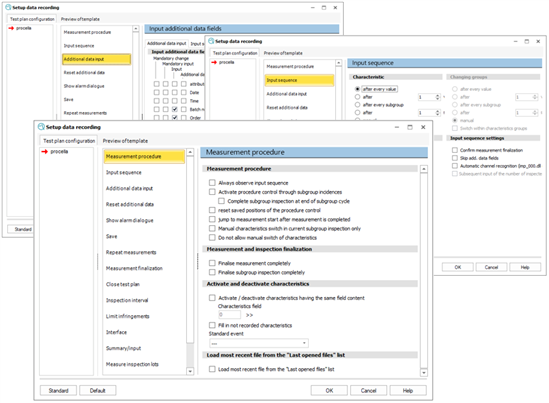 |
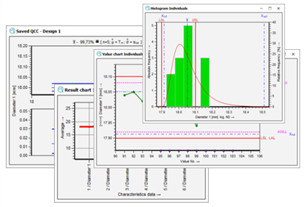 |
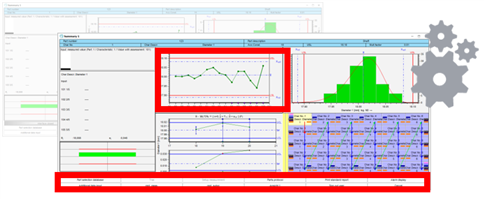 |
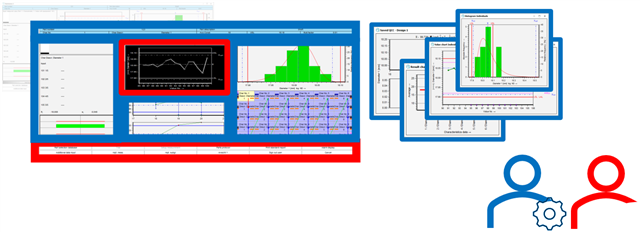 |
|
|
|
 |
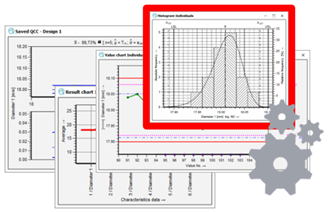 |
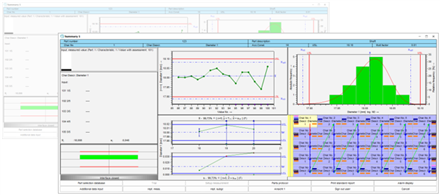 |
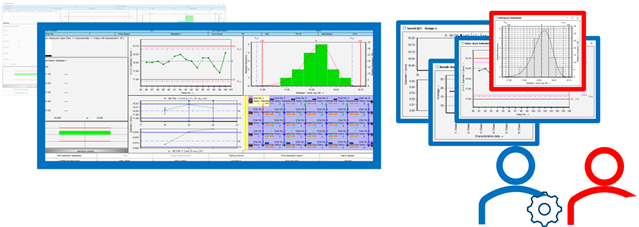 |
|
|
|
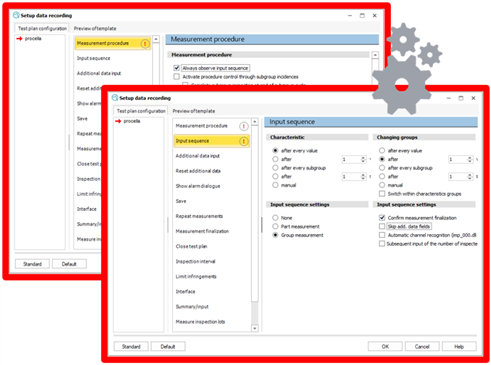 |
 |
 |
 |
|
|
|
 |
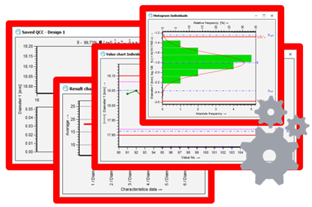 |
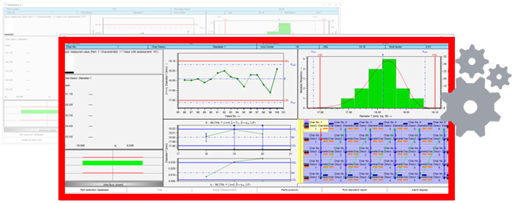 |
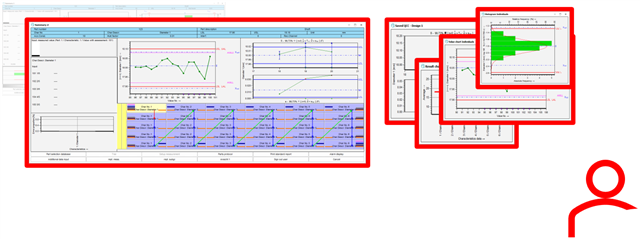 |
|
|
|
 |
 |
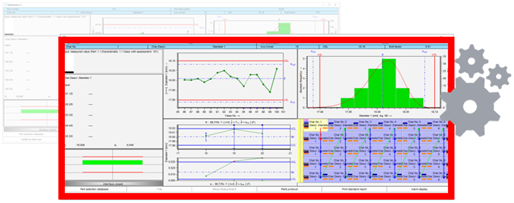 |
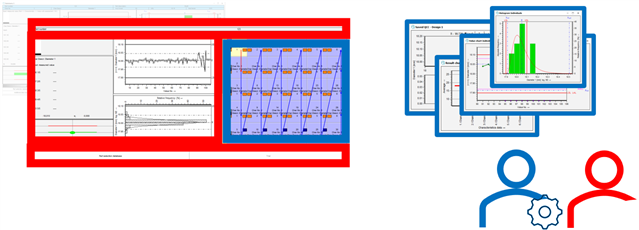 |
|
To stick with the example from the beginning, the different displays can mean many configuration possibilities.

It could mean that users "A" and "B" have inherited the same "Summary/input" settings, while the user "B" has saved different settings for the "Value chart" graphic. Or it could also mean that both users "A" and "B" have their own "Summary/input 11" and don't use the inherited settings. Or that neither "A" nor "B" has the right to save their preferences. They could be members of different user groups and therefore inherit different configurations.
And why user "A" and user "C" seems to have the same layout, but different measurement directions could imply that they are members of different user groups with different settings on the standard configuration level for the "Setup data recording" dialogue.
Storage concept with templates
In order to keep administration to a minimum and to maintain an overview, since version 13 it is possible to create templates for the test order procedure. The layout template and measurement process template can then be assigned to a data set.
Detailed explanation how to create and handle the template for processing the measurement situation and how to choose a layout is described in a separate topic. Link to: Default for Layout Configuration
Layout storage concept using templates
In this storage concept, one of the 10 available "Summary/input" windows is assigned to a data set. If a data set doesn't have a "Summary/input" window assigned, the default "Summary/input" window is used as a fallback level.
|
|
|
Use “Summary/input” when loading the data set. |
 |
Use “Summary/input 2” when loading the data set. |
|
 |
Use default layout when loading the data set. |
Procedure for test order using templates
Depending on the metrological and organisational context, the requirements of the measurement situation may vary, but they may also be the same for different data sets. For this reason, templates for processing of the measurement situation can be created and assigned to a data set. For example:![]()
Basically, each of the saved templates represents a combination of options in the “Setup data recording” dialogue to organise the processing of the measurement situation. Templates can be used regardless of whether a data set is stored in the database or as a file.
|
|
Use “Subgroup-measurement” (vertical measurement procedure) to load data set “A”. |
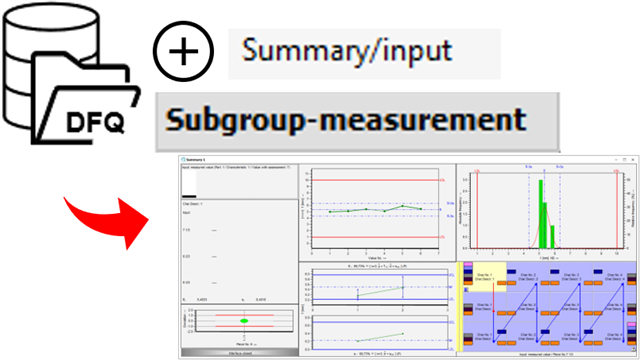 |
Use “Subgroup-measurement” (vertical measurement procedure) to load data set “B”. |
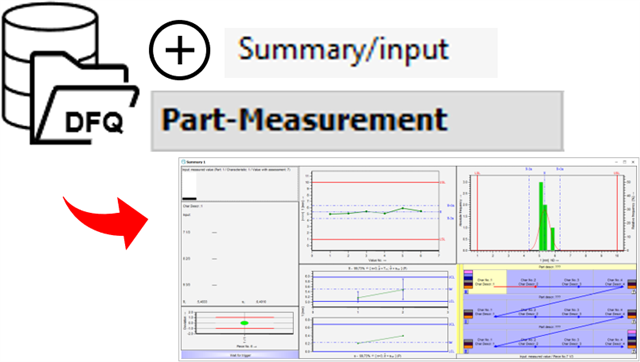 |
Use “Part-measurement” (horizontal measurement procedure) to load data set “C”. |
Storage concept with templates - Example
Here is a brief overview of just a few of the possible ways to handle the "Summary/input" window and the measurement procedure using templates.
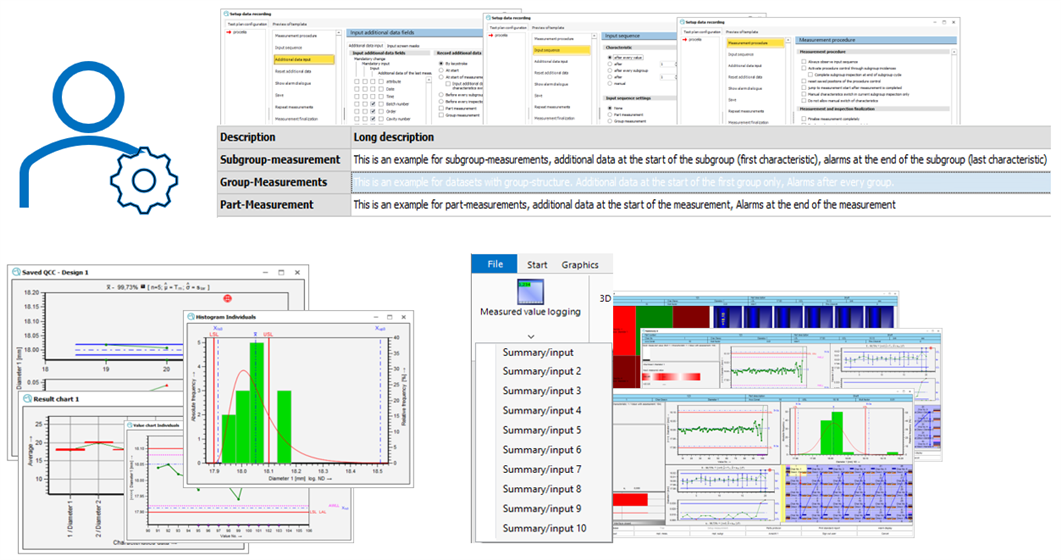 |
Templates for processing the measurement situation as well as the configuration for the standalone graphics and the “Summary/input” follows the inheritance of the configuration management. |
|||
|
|
Each dataset has been assigned a template for processing the measurement situation and a "Summary/input" window. |
|||
When a user loads a dataset with configured templates, the views may still be different for different users.
 |
Without custom settings and without changes through configuration management, a user group inherits all graphical settings from the “Configuration” user. |
|||
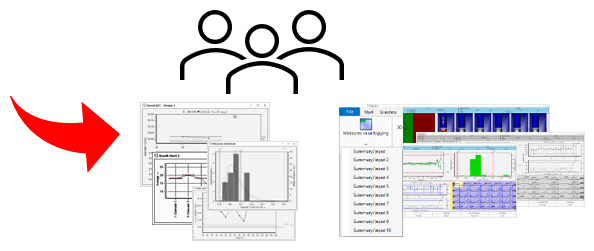 |
Using Configuration Management, different graphical settings can be assigned to different user groups. |
|||
 |
Although a user group inherits the settings of the "Configuration" user, the members of a group can have their own settings. |
|||
|
|
Procedure settings |
Standalone graphics |
Embedded elements |
Sources of user settings (inheritance and user customisation) |
|
|
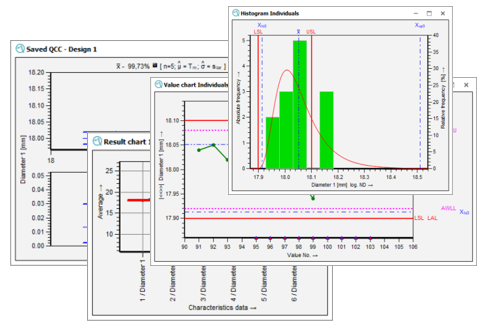 |
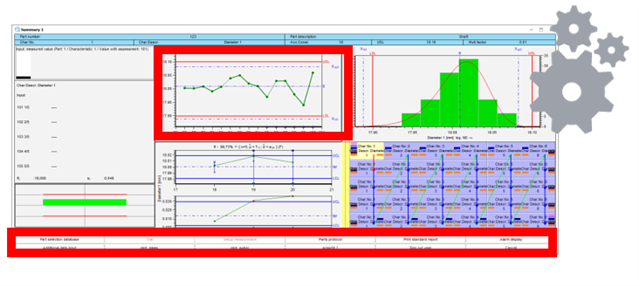 |
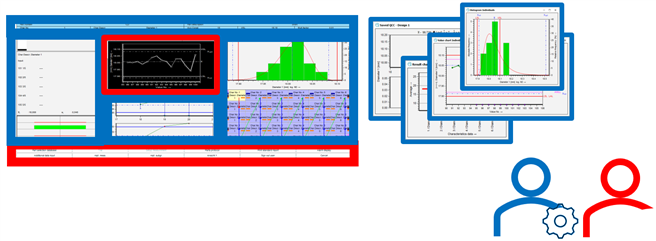 |
|
|
|
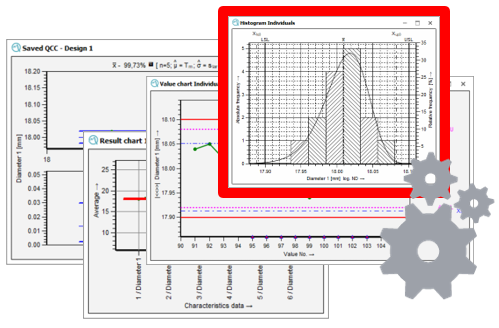 |
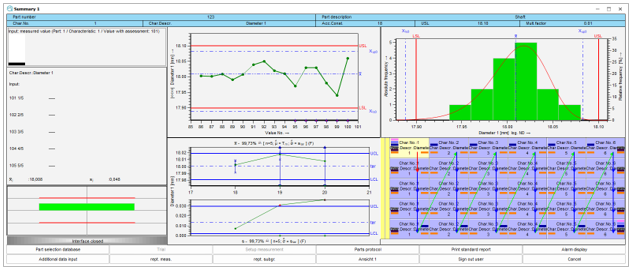 |
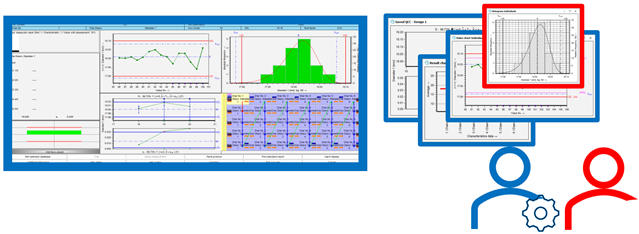 |
|
|
|
 |
|||
|
|
 |
 |
 |
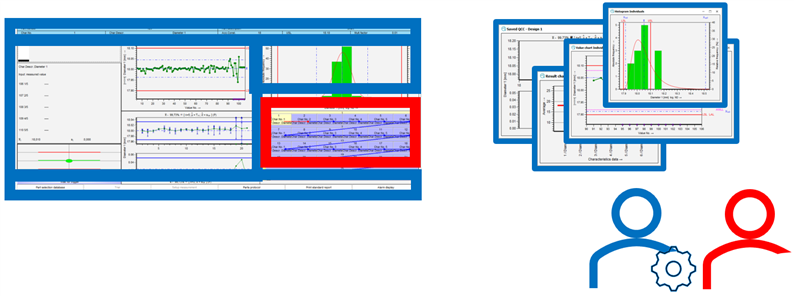 |
Let's go back to the example from the beginning. When using the storage concept with templates, it is not possible for users to have a different procedure for the test order. User “C” will follow the same procedure for the test orders as users “A” and “B”.

If users have the right to save their own settings, or if no template is set for a dataset, it is possible for users to have different layouts, as shown here for users "A" and "B". To ensure that all users have the same settings and view, disable the right for users to save their own settings and use configuration management to distribute the "Summary/input" layouts as well as their info area and the application bar.
Switching the storage concepts
When migrating to the template storage concept, it is recommended that an analysis of the current system is carried out first, followed by careful planning of the migration. Think carefully about which measurement situations are required and how layouts should be designed. The distribution of settings and layout in procella is described in a separate topic in the "How to" series. Link to: ... be a Key-User

